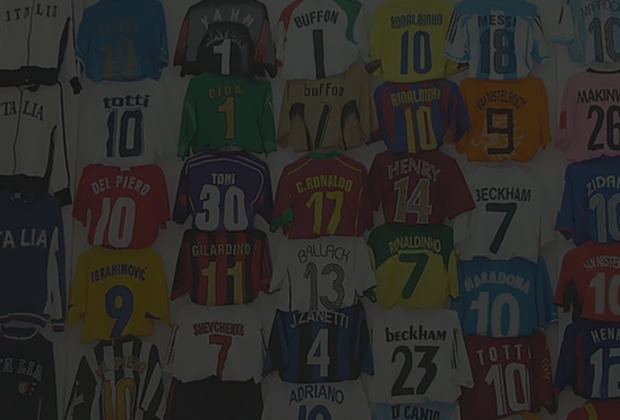The distinguishable part of any football team is their shirt. Not only does it identify the squad to spectating fans, but it also makes it easier for players to spot teammates during the game. The kit may be only one aspect of football, but the shirt has evolved significantly over the years, both in terms of material and style.

Image Credits: www.flickr.com
When football first became popular during the Middle Ages, it was a mob game. There wasn’t a set of rules, meaning teams could have hundreds of players. It goes without saying that it was purely chaotic and violent, and due to the amount of deaths that it inevitably led to, the government ended football in this form.
The sport was eventually reborn, played by young men at university. These teams evolved into clubs, yet there still wasn’t any rules in place until 1848 when Cambridge University created their own. They were incredibly basic, but were the foundation of the rules that are still enforced to this day.
Although clubs now had rules they could refer to, uniforms/kits still hadn’t yet come into play, which meant that they could wear whatever they liked. However, to make things easier for fans and players, teams started to wear scarfs, caps or sashes of a distinct individual colour. In most cases, people would wear cricket whites, simply because most football squads of this time were composed of ex-cricket players.
Some of the first football clubs were founded in the 1800s, and the most notable were Hallam, Sheffield FC and Notts County. Most games were played within a school or university, with the concept of ‘away days’ yet to exist.
1863 saw some of the leading players work together to create the Football Association, including a set of uniform rules. In less than ten years the English FA Cup was created in 1871, which enforced a set of rules that every team had to abide by. Thanks to the changing nature of the game, a newspaper article commented on how hard it was to differentiate between teams.
In no time at all, the FA had responded and kits started to appear during games in the 1870s. As teams were part of sports clubs and public schools, the colour scheme would follow these establishments. Jerseys were the norm, along with cowls, caps and other headgear to keep the sun out of player’s eyes.
Early football games were played by men from minor aristocracy or the upper middle class, which had a large impact on the type of kits they would wear. Those with more money could go to a tailor, who would then personally create their shirt. This produced the problem of players having kits that weren’t identical due to using different tailors.
It wasn’t until the 1880s that football became a game anybody could be part of, with more working class men participating. With popularity rising at a fast rate, clothes manufacturer Bukta saw a gap in the market and became the first sportswear company in the UK.
At this time, shirts were known as jerseys, and were created as a close fitting garment without a collar. The other alternative was a fishing garment known as a guernsey. One of the main reasons these materials were used was to cope with the British weather, and the cold conditions.
For other football clubs, different shirts were chosen thanks to their impact on performance. For example, Burnley chose a long, loose fitting shirt, fitted with a collar, as they felt it allowed players to move more easily.
Most teams focused more on purchasing shirts that were affordable instead of performance changing. This is why most early teams have vertical stripes instead of horizontal, as they were easier for a tailor to create.
There weren’t many more notable innovations during this period of footballing history, but the 1888 creation of the Football League gave clubs fixtures that included other teams. It also fell to the club to sort out all of the kits, instead of it being the responsibility of each individual player.
In 1890, a highly anticipated game of Wolves vs Sunderland was met with disaster as they both had an identical red and white kit. Due to this, a change was made in the rules where every team had to register their own team colours to avoid this happening again.
With football progressing into the twentieth century, a much larger focus was spent on performance and durability instead of cost. Cotton and wool were used due to their heavyweight and tough characteristics.
1909 introduced a ruling which meant goalkeepers had to wear certain tops which identified them as being different from standard players. Originally, they would wear wool sweaters complete with a flat cap, ensuring the sun wouldn’t be a distraction.
Once the Second World War had ended, numbers were added to shirts to allow players to be identified by the crowd and referee. Due to rationing still being present, coupons had to be used, and supporters would generously donate their portion to assist a club.
When the nineties came about, a new type of shirt that is still used today was introduced. Polyester and nylon were incorporated because of how lightweight they are. The idea was that this would allow players to stay cool for a full game. However, football has evolved in recent years, meaning only the most expensive materials are used in the current market.
There have been various additions, such as skin tight lycra and breathable shirts, yet the previous type of kit looks like it won’t be going anywhere. As technology progresses and more money is invested on state of the art materials, it will be interesting to see what future football strips will be like.
This blog was written by Rachel Jensen on behalf of Campo Retro, your first stop for retro football apparel.
























































